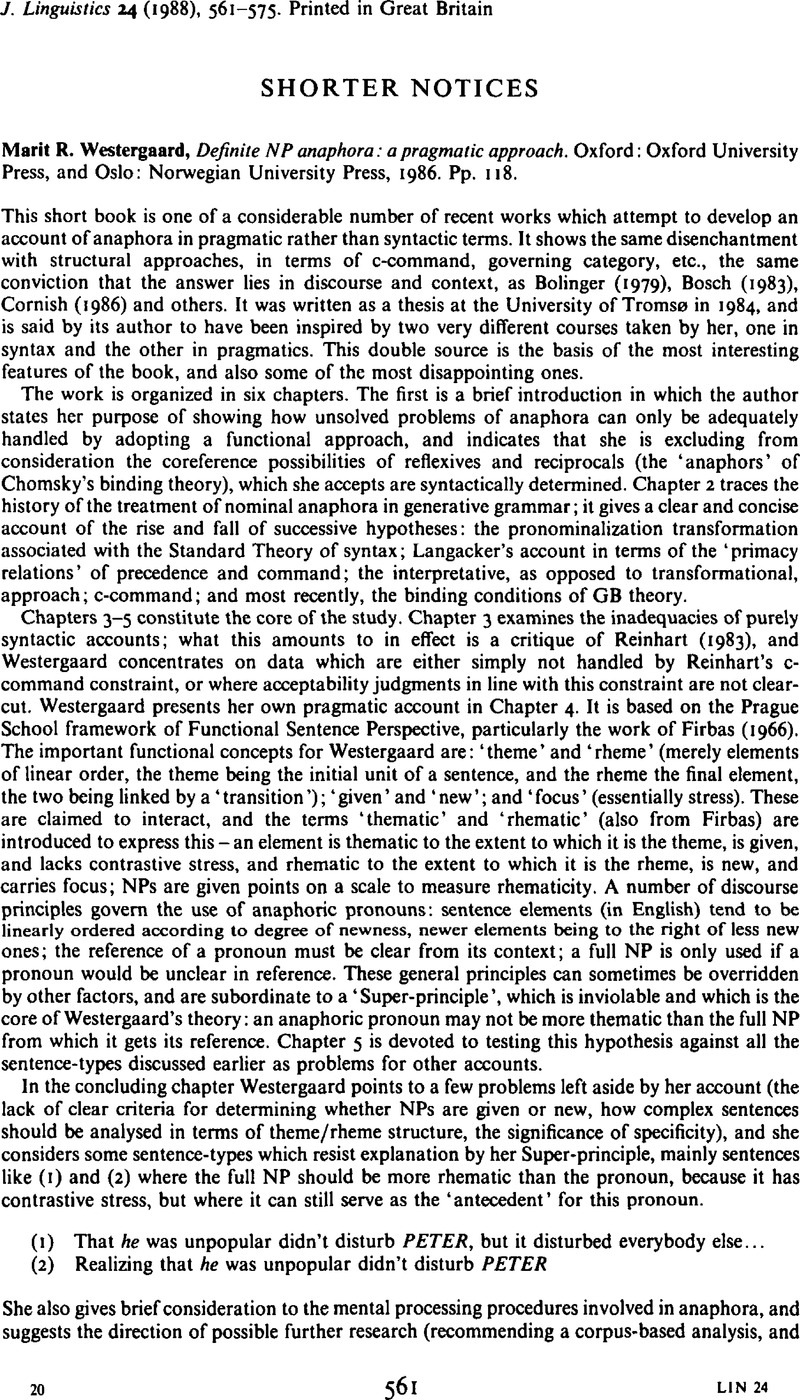No CrossRef data available.
Article contents
Marit R. Westergaard, Definite NP anaphora: a pragmatic approach. Oxford: Oxford University Press, and Oslo: Norwegian University Press, 1986. Pp. 118.
Review products
Marit R. Westergaard, Definite NP anaphora: a pragmatic approach. Oxford: Oxford University Press, and Oslo: Norwegian University Press, 1986. Pp. 118.
Published online by Cambridge University Press: 28 November 2008
Abstract
An abstract is not available for this content so a preview has been provided. Please use the Get access link above for information on how to access this content.

- Type
- Shorter Notices
- Information
- Copyright
- Copyright © Cambridge University Press 1988
References
REFERENCES
Bolinger, D. (1979). Pronouns in discourse. In Givón, T. (ed.), Syntax and semantics, vol. 12: Discourse and syntax. New York: Academic Press. 289–309.Google Scholar
Cornish, F. (1986). Anaphoric relations in English and French. London & Canberra: Groom Helm.Google Scholar
Firbas, J. (1966). Non-thematic subjects in contemporary English. Travaux linguistiques de Prague 2. 339–356.Google Scholar
Reinhart, T. (1983). Anaphora and semantic interpretation. London & Canberra: Croom Helm.Google Scholar


